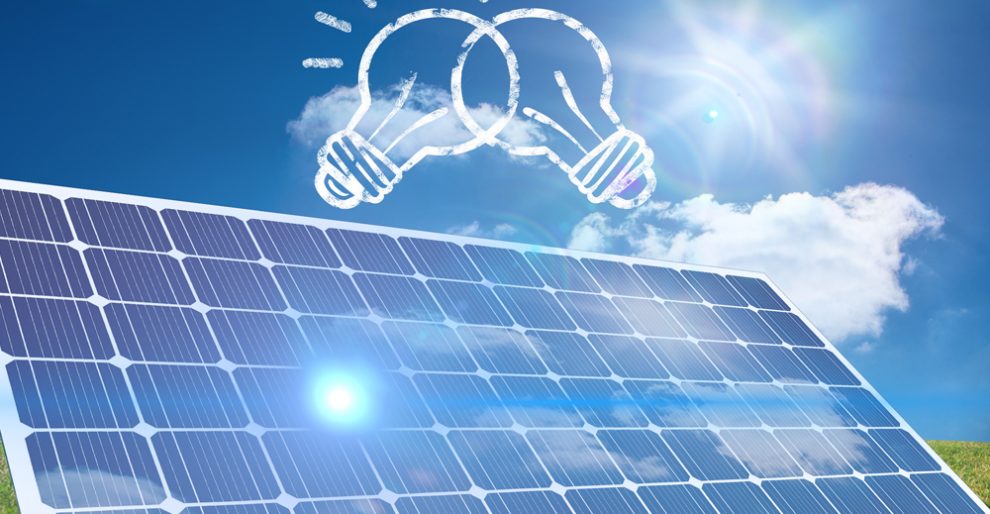Solar power is found to be the future energy. It is reliable, it’s powerful, and it fuels the vast majority of lives on earth. In recent years, less than 2 percent of the world’s electricity has come from solar power. But upcoming inventions are likely to change that.
Solar panel works by converting light directly into electricity.
The 5 inventions showing the future of solar power:
Agrivoltaics
In agrivoltaics, solar panels get installed over crop fields. So that there isn’t a need to clear extra space for the panels. The crops serve to keep the things cool as they release water through their leaves. The release of water takes place just like sweating. Evaporating water removes heat from a plant and brings down the plant’s temperature and cools the area. It helps things nice for the solar panels and makes them more efficient.
Engineers have also set up a similar concept called floatovoltaics. In this concept floating solar panels are placed on bodies of water and which are typically cooler than the air. Agrivoltaics and floatovoltaics also unwrap lots of new possibilities when it comes to finding space for a huge array of panels.
BIPV Solar Technology
Building-integrated photovoltaics, as the name indicates, perfectly combine into building architecture in the sort of canopies, roofs, facades, curtain walls, and skylight systems. Other than traditional solar PV panels, BIPV can be attractively appealing rather than a compromise to a building’s design.But attractiveness is not just enough for solar buyers; finance is also a matter.
The BIPV solar panel system allows homeowners to save on electric power and building materials charges. By replacing BIPV for standard building materials, we will be able to lessen the extra cost of solar panel mounting systems.
Solar Skins
These are a novel PV technology to combine custom designs into solar panel systems. The solar skin technology is like the ad wraps seen on bus windows.Solar thin-film skins sustain high efficiency because of its selective light filtration advancements. The sunlight dropping on solar skins is filtered to hit the solar cells beneath it. Hence, it simultaneously exhibits the custom image and gives solar energy.
These imprinted custom images, embedded into solar panels, can precisely match the rooftops of your homes.
They can also be favorable for government offices or businesses. They can be modified to showcase business advertisements, business logos, a country’s flag, and so on.
Besides, solar skins make use of rail-less racking systems, sit lower, have a sleek finish, and hide metal components, which gives the panels a mind-blowing appearance.
Solar fabrics
Researchers are working on solar fabrics, which are textiles that would have solar cells integrated into the fibers. The objective is to generate electricity just by walking outside.
The idea was for the panel to be small enough that the person wearing them shouldn’t feel them. To test their invention, the researchers embedded 200 cells into a prototype. They were capable of generating adequate energy to charge a fitbit. With 2000 cells, you could hook up your smartphone with a wire and make enough electricity to charge it.
Solar Thermal Fuels
The recent inventions associated with solar energy have aimed on creating electrical energy. But some researchers have taken a different approach. They are focusing on using the sun’s energy for thermal power that heats our homes. The goal is to create rechargeable batteries made of chemicals called solar thermal fuels. Solar thermal fuels absorb the sun’s energy and store it in chemical bonds and then release it as heat at a later time.
When fuels absorb sunlight, the new energy disrupts the chemical bonds in the molecules causing them to rearrange a new configuration. It takes energy for molecules to form chemical bonds with each other. The new configuration takes more energy. So it traps all the energy the fuel has absorbed from the sun and just holds on to it.
The intent is to enhance a fuel that can release enough energy to heat a home. The fuel would begin on the roof of your home, where it would take up sunlight. Then, when it is time to turn on the heat, the fuel would pass through that filter, and the molecules would release all the heat they stored. The whole process is emission free and the fuel can be reused over and over.
Today, solar technology is much more than just solar panels. While these inventions consume time to progress and make their way into our lives. They exhibit a lot of promise for a solar powered future.
0

